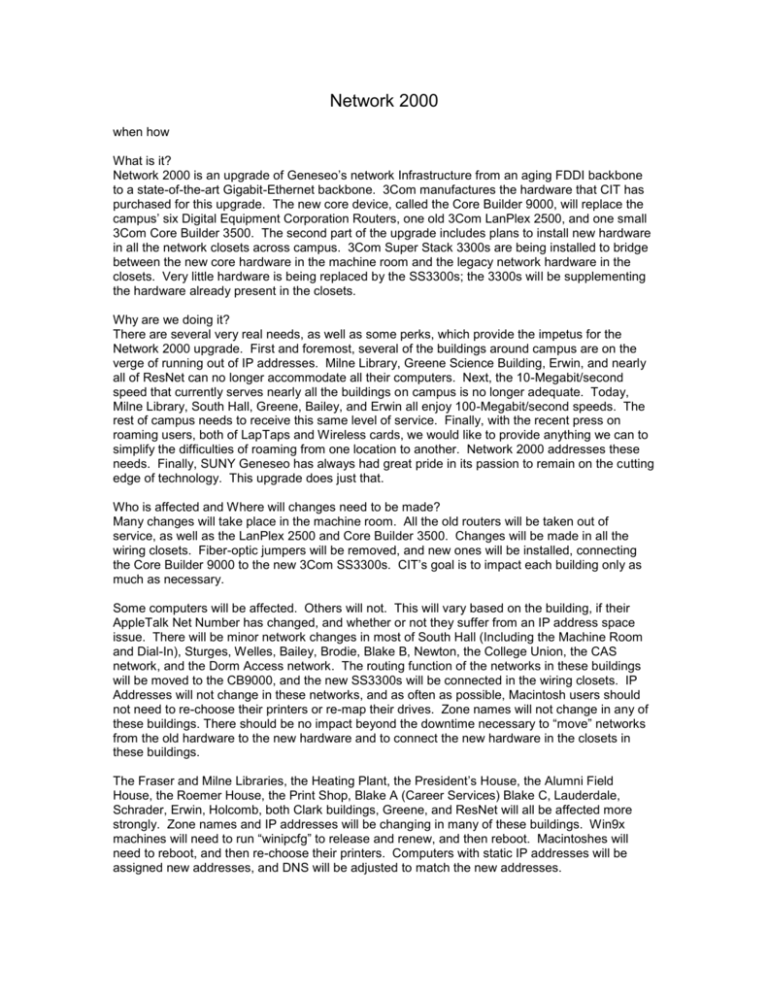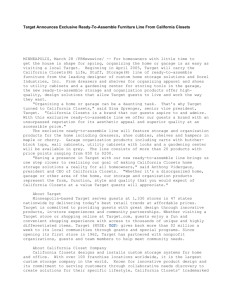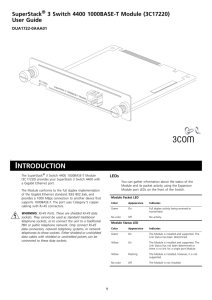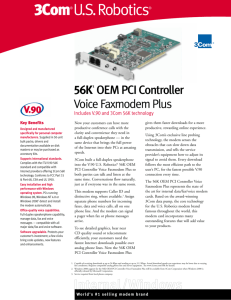Network 2000 - SUNY Geneseo
advertisement

Network 2000 when how What is it? Network 2000 is an upgrade of Geneseo’s network Infrastructure from an aging FDDI backbone to a state-of-the-art Gigabit-Ethernet backbone. 3Com manufactures the hardware that CIT has purchased for this upgrade. The new core device, called the Core Builder 9000, will replace the campus’ six Digital Equipment Corporation Routers, one old 3Com LanPlex 2500, and one small 3Com Core Builder 3500. The second part of the upgrade includes plans to install new hardware in all the network closets across campus. 3Com Super Stack 3300s are being installed to bridge between the new core hardware in the machine room and the legacy network hardware in the closets. Very little hardware is being replaced by the SS3300s; the 3300s will be supplementing the hardware already present in the closets. Why are we doing it? There are several very real needs, as well as some perks, which provide the impetus for the Network 2000 upgrade. First and foremost, several of the buildings around campus are on the verge of running out of IP addresses. Milne Library, Greene Science Building, Erwin, and nearly all of ResNet can no longer accommodate all their computers. Next, the 10-Megabit/second speed that currently serves nearly all the buildings on campus is no longer adequate. Today, Milne Library, South Hall, Greene, Bailey, and Erwin all enjoy 100-Megabit/second speeds. The rest of campus needs to receive this same level of service. Finally, with the recent press on roaming users, both of LapTaps and Wireless cards, we would like to provide anything we can to simplify the difficulties of roaming from one location to another. Network 2000 addresses these needs. Finally, SUNY Geneseo has always had great pride in its passion to remain on the cutting edge of technology. This upgrade does just that. Who is affected and Where will changes need to be made? Many changes will take place in the machine room. All the old routers will be taken out of service, as well as the LanPlex 2500 and Core Builder 3500. Changes will be made in all the wiring closets. Fiber-optic jumpers will be removed, and new ones will be installed, connecting the Core Builder 9000 to the new 3Com SS3300s. CIT’s goal is to impact each building only as much as necessary. Some computers will be affected. Others will not. This will vary based on the building, if their AppleTalk Net Number has changed, and whether or not they suffer from an IP address space issue. There will be minor network changes in most of South Hall (Including the Machine Room and Dial-In), Sturges, Welles, Bailey, Brodie, Blake B, Newton, the College Union, the CAS network, and the Dorm Access network. The routing function of the networks in these buildings will be moved to the CB9000, and the new SS3300s will be connected in the wiring closets. IP Addresses will not change in these networks, and as often as possible, Macintosh users should not need to re-choose their printers or re-map their drives. Zone names will not change in any of these buildings. There should be no impact beyond the downtime necessary to “move” networks from the old hardware to the new hardware and to connect the new hardware in the closets in these buildings. The Fraser and Milne Libraries, the Heating Plant, the President’s House, the Alumni Field House, the Roemer House, the Print Shop, Blake A (Career Services) Blake C, Lauderdale, Schrader, Erwin, Holcomb, both Clark buildings, Greene, and ResNet will all be affected more strongly. Zone names and IP addresses will be changing in many of these buildings. Win9x machines will need to run “winipcfg” to release and renew, and then reboot. Macintoshes will need to reboot, and then re-choose their printers. Computers with static IP addresses will be assigned new addresses, and DNS will be adjusted to match the new addresses.











